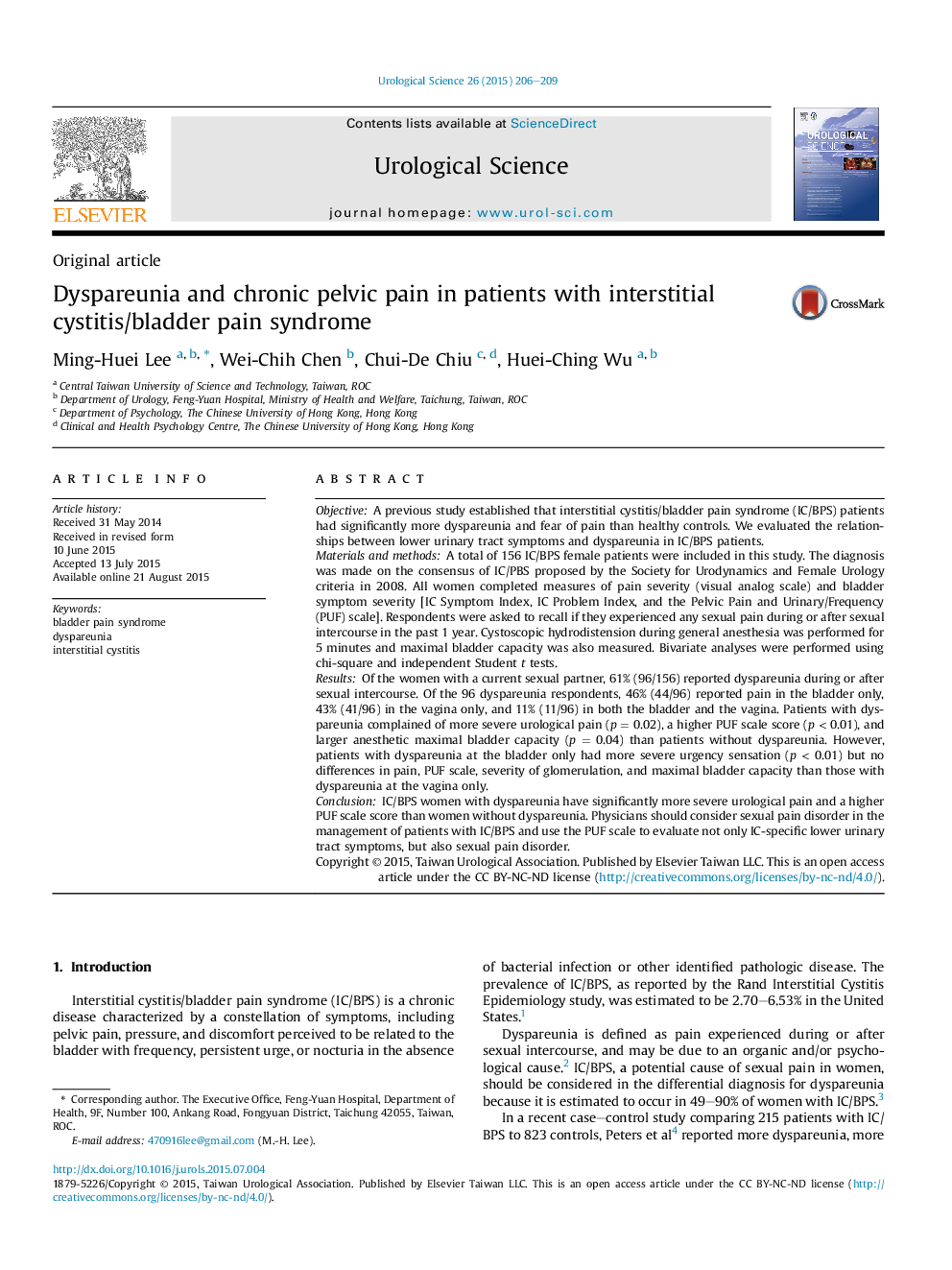| کد مقاله | کد نشریه | سال انتشار | مقاله انگلیسی | نسخه تمام متن |
|---|---|---|---|---|
| 4276123 | 1285389 | 2015 | 4 صفحه PDF | دانلود رایگان |

ObjectiveA previous study established that interstitial cystitis/bladder pain syndrome (IC/BPS) patients had significantly more dyspareunia and fear of pain than healthy controls. We evaluated the relationships between lower urinary tract symptoms and dyspareunia in IC/BPS patients.Materials and methodsA total of 156 IC/BPS female patients were included in this study. The diagnosis was made on the consensus of IC/PBS proposed by the Society for Urodynamics and Female Urology criteria in 2008. All women completed measures of pain severity (visual analog scale) and bladder symptom severity [IC Symptom Index, IC Problem Index, and the Pelvic Pain and Urinary/Frequency (PUF) scale]. Respondents were asked to recall if they experienced any sexual pain during or after sexual intercourse in the past 1 year. Cystoscopic hydrodistension during general anesthesia was performed for 5 minutes and maximal bladder capacity was also measured. Bivariate analyses were performed using chi-square and independent Student t tests.ResultsOf the women with a current sexual partner, 61% (96/156) reported dyspareunia during or after sexual intercourse. Of the 96 dyspareunia respondents, 46% (44/96) reported pain in the bladder only, 43% (41/96) in the vagina only, and 11% (11/96) in both the bladder and the vagina. Patients with dyspareunia complained of more severe urological pain (p = 0.02), a higher PUF scale score (p < 0.01), and larger anesthetic maximal bladder capacity (p = 0.04) than patients without dyspareunia. However, patients with dyspareunia at the bladder only had more severe urgency sensation (p < 0.01) but no differences in pain, PUF scale, severity of glomerulation, and maximal bladder capacity than those with dyspareunia at the vagina only.ConclusionIC/BPS women with dyspareunia have significantly more severe urological pain and a higher PUF scale score than women without dyspareunia. Physicians should consider sexual pain disorder in the management of patients with IC/BPS and use the PUF scale to evaluate not only IC-specific lower urinary tract symptoms, but also sexual pain disorder.
Journal: Urological Science - Volume 26, Issue 3, September 2015, Pages 206–209